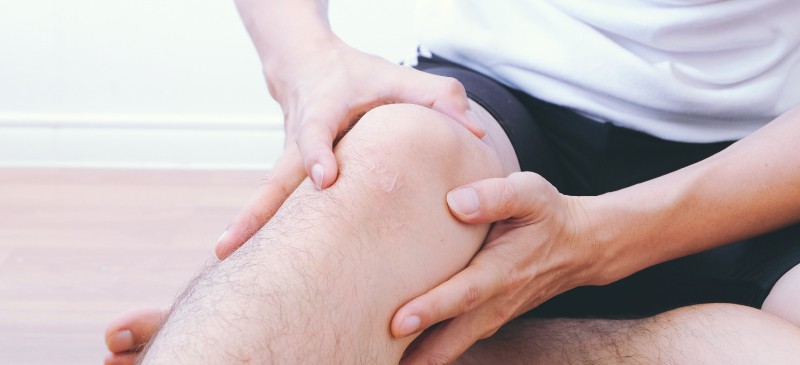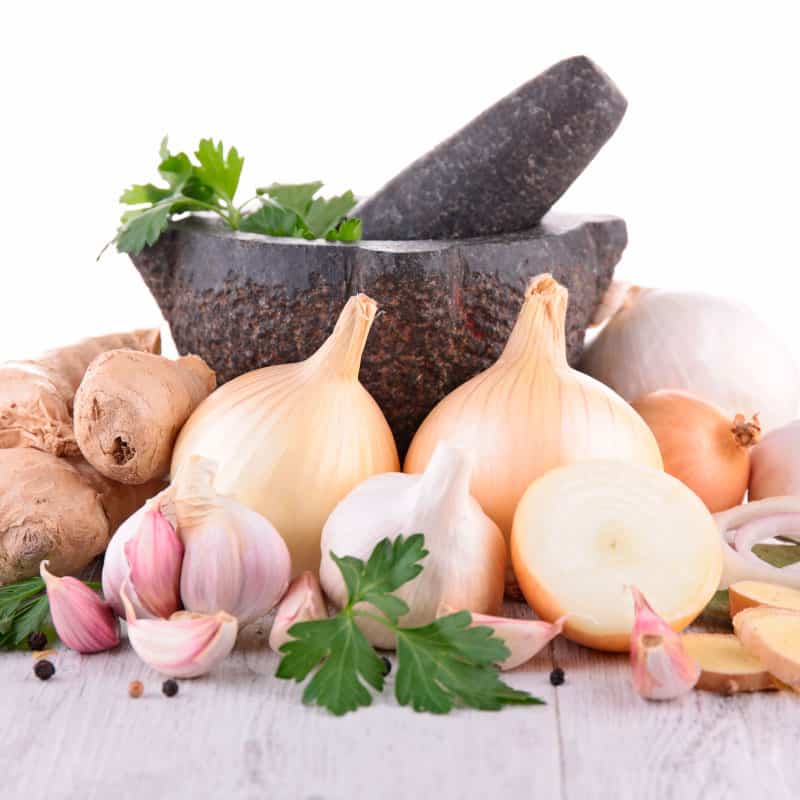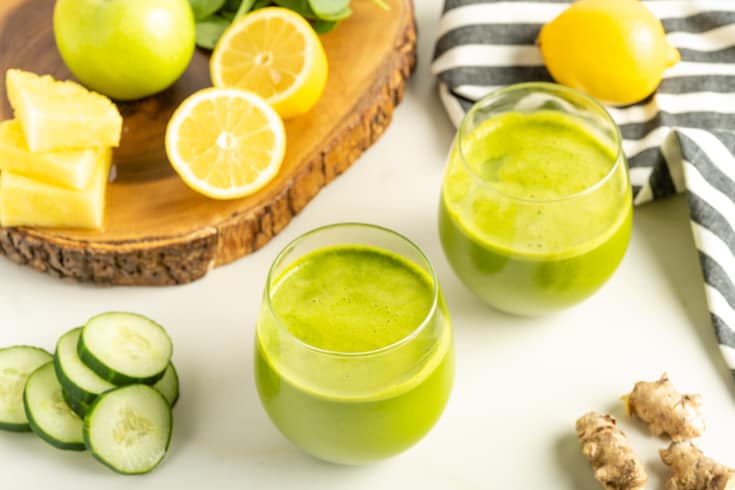This Dr. Axe content is medically reviewed or fact checked to ensure factually accurate information.
With strict editorial sourcing guidelines, we only link to academic research institutions, reputable media sites and, when research is available, medically peer-reviewed studies. Note that the numbers in parentheses (1, 2, etc.) are clickable links to these studies.
The information in our articles is NOT intended to replace a one-on-one relationship with a qualified health care professional and is not intended as medical advice.
This article is based on scientific evidence, written by experts and fact checked by our trained editorial staff. Note that the numbers in parentheses (1, 2, etc.) are clickable links to medically peer-reviewed studies.
Our team includes licensed nutritionists and dietitians, certified health education specialists, as well as certified strength and conditioning specialists, personal trainers and corrective exercise specialists. Our team aims to be not only thorough with its research, but also objective and unbiased.
The information in our articles is NOT intended to replace a one-on-one relationship with a qualified health care professional and is not intended as medical advice.
Crepitus Symptoms, Natural Remedies and How to Prevent
September 3, 2018

Grinding, creaking, grating, popping or crunching noises that emanate from your joints is called crepitus, or crepitation. Crepitus can also refer to the cracking sounds from the lungs that occurs during a respiratory illness, and it can also refer to the sounds bones make after a fracture. (1)
When the sounds occur in joints, pain may or may not occur, depending on the root cause. Some causes of crepitus may cause pain, while other causes, like air bubbles in a joint, may not. For those with arthritis — a condition where cartilage deteriorates causing friction between bones — pain can be persistent and even quite severe.
Crepitus of the knee is the most common place to experience the creaking, popping or crunching sounds, but it can occur in virtually every joint including the neck, spine, hips, shoulders or ankles. When the sounds aren’t accompanied by pain, there is rarely a cause for concern. However, if crepitus symptoms occur with pain or swelling, or are quite persistent, talk to your physician.
What Is Crepitus?
Crepitus is the term used to describe the popping, grinding, crunching or grating sounds that come from a joint when moved, the lungs during a respiratory illness like bronchitis, or after a bone has been fractured. (1)
Generally, occasional knee popping, neck cracking or other noises in joints is considered perfectly normal, and not a cause for alarm. Certain areas of the body, including the knees, ankles, neck and lungs are more likely to be affected. This condition may present differently in each area and may be caused by different underlying conditions.
Crepitus of the Knee: When it occurs in the knee, pain may or may not be present. Often, when you place your hand over the knee, you can feel the pop or crunch as well as hear it. The sound may be muffled, or quite loud. If pain accompanies the sound, crepitus of the knee may be a sign of rheumatoid arthritis or osteoarthritis. (2)
Crepitus of the Ankle: In the ankle, crepitus may occur with pain, and an abnormal range of motion may present. Typically, crepitus ankle sounds are generally more of a grinding type noise, instead of popping like in the knee or ankle. The grinding noises can indicate ankle osteoarthritis. (3)
Crepitus of the Neck: Typically painless, virtually everyone’s neck pops or cracks from time to time. There is a fluid between the joints in the neck and the spine to help lubricate the joints. When out of alignment, crepitus neck sounds can occur as the bones rub together. (4)
Crepitus of the Lungs: Also referred to as bibasilar crackles, this is the sound your lungs make if there is excessive fluid in the lungs or airways. Crepitus lung sounds can present as popping bubbles or crackling sounds and are often present with an upper respiratory illness like bronchitis, pneumonia, pulmonary edema, COPD, asthma or interstitial lung disease. (5)
Signs and Symptoms
The signs and symptoms of crepitus depend on the joint that is affected.
Crepitus of the Knee
- Knee popping, with or without pain
- Co-occurring symptoms may include:
- Pain while walking or bending the knee
- Stiffness that improves with stretching or exercise
- Tenderness or soreness on the inside of the knee
- Periodic swelling of the knee
Crepitus of the Ankle
- Grinding or grating sound when the ankle is rotated
- Co-occurring symptoms may include:
- Stiffness in the joint
- Swelling in the ankle
- Loss of flexibility
- Reduced range-of-motion
- Difficulty walking
- Difficulty with weight-bearing
- Prone to slip and fall
Crepitus of the Neck
- Neck popping is the most common sign
- Co-occurring symptoms may include:
- Popping with or without pain
- Neck stiffness
- Poor range of motion due to pain
Crepitus of the Lungs
- Bubbles popping or wheezing sounds
- Co-occurring symptoms may include:
- Shortness of breath
- Unusual fatigue
- Chest pain or pressure
- Sense of suffocation
- Cough
- Fever
- Wheezing
- Swelling in the extremities
Causes
Crepitus in joints can be caused by:
- Gas buildup in the synovial fluid
- Osteoarthritis
- Rheumatoid arthritis
- Injury
- Meniscus tear
- Runner’s knee
Crepitus in lungs can be caused by:
- Smoking
- Family history of lung disease
- Exposure to lung irritants
- Exposure to bacteria or viruses
Risk Factors
If caused by osteoarthritis or rheumatoid arthritis, risk factors include: (6)
- Being overweight
- Previous injury
- Family history of arthritis
- Inactive lifestyle
- Inflammation
Conventional Treatment
Crepitus treatment is generally not necessary unless the sounds are accompanied by pain, swelling or other symptoms. When other symptoms are present, your medical team may recommend one or more of the following treatments depending on the root cause:
- RICE Protocol: Rest. Ice. Compression. Elevation. For meniscus tears, swelling or injury.
- Arthroscopy surgery to repair tears in the meniscus (7)
- Over-the-counter NSAIDs and other painkillers for pain and inflammation
- Prescription pain medications
- Prescription anti-inflammatory medications
- Prescription corticosteroids
- Prescription topical agents
- Surgical repair if crepitus is due to injury
- Stem cell injections for osteoarthritis of the knee (8)
- Crepitus after knee replacement surgery may require open or arthroscopic debridement. (9)
Treatment for crepitus of the lungs:
- Inhaled steroids used to reduce inflammation of the airways
- Bronchodilators to relax the airways
- Oxygen therapy
- Pulmonary rehabilitation
6 Natural Remedies for Crepitus Symptoms
1. Boswellia Serrata
Also known as frankincense oil, this powerful plant extract is known for boosting the immune system, reducing inflammation, relieving joint pain and improving mobility making it a top natural arthritis treatment. In a clinical evaluation published in International Quarterly Journal of Research in Ayurveda, researchers studied the effect of Boswellia serrata on participants with osteoarthritis. (10)
One group was provided 6 grams of Boswellia serrata, divided into 3 equal doses after meals, while another group was given the same dosing, but also was given a topical Boswellia serrata ointment to apply to the arthritic joints. Both groups experienced a significant improvement in mobility, joint swelling, joint pain and also a reduction in serum triglycerides.
2. Turmeric
Long-celebrated for its abilities to prevent blood clots, reduce depression, combat obesity, regulate cholesterol, and reduce inflammation, turmeric is also one of the best natural painkillers available. In fact, an evaluation of randomized clinical trials, the results of which were published in the Journal of Medicinal Food, found that 1,000 milligrams daily of curcumin extract (the active compound in turmeric) can be effective in the treatment of arthritis. (11)
Researchers noted osteoarthritis and rheumatoid arthritis symptoms including pain, stiffness, mobility and inflammation were measured and results suggest that 1,000 milligrams a day might have similar pain-relieving effects as certain over-the-counter painkillers like ibuprofen. Researchers do note that larger studies are needed.

3. Omega-3 Fatty Acids
According to the Arthritis Foundation, omega-3 fatty acids can help reduce inflammation in the body and can be helpful for fighting inflammatory types of arthritis. (12)
In a clinical study published in the journal Annals of Rheumatoid Disease, researchers found that individuals with recent onset rheumatoid arthritis experienced greater pain relief, had a lower failure of traditional therapy (DMARD therapy) and a higher rate of remission when taking a high dose — 5.5 grams daily — of fish oil.
4. Collagen
Responsible for healthy skin, bones, joints and tendons, collagen is essential for anyone with crepitus in their joints. Inside the joints, collagen works as a lubricant, allowing the bones to move properly without pain. A clinical study conducted by researchers at Penn State University’s Department of Nutrition and Sports Nutrition for Athletics found that collagen hydrolysate supports joint health and can possibly reduce the risk of joint deterioration in high-risk groups. (13)
In a new clinical study published in the journal PLOS One, oral supplements of collagen type V can reduce the inflammation, help to avoid joint destruction and can support arthritis treatment, according to researchers. They cite collagen type V specifically for those with inflammatory joint diseases as synovial tissues are often affected, and this type of collagen is exposed in synovial inflammation. They do note that further studies are necessary to demonstrate the cellular immunity and other functions. (14)
High-quality collagen supplements, particularly bovine collagen, can be helpful for arthritis, gut health, tissue repair and skin quality. Select a grass-fed bovine collagen supplement daily to help relieve arthritis symptoms and crepitus symptoms.
5. Exercise
Staying in motion is a great natural muscle relaxer and for those with arthritis or joints that creak, crack or pop, exercising is a great way to relieve the buildup of fluids, improve mobility, flexibility, fatigue and joint pain, according to the Mayo Clinic. (15)
Low-impact activities like walking are recommended, but you also need to include range-of-motion exercises to relieve stiffness. These types of exercises are designed to encourage your joints to move through their full range of motion. This can include arm circles, rolling your neck side to side or rolling your shoulders forward and back.
It is also imperative that you strengthen the muscles around the joints to help protect them. If you have an inflammatory type of arthritis, weight training three days a week is great; however, be sure to take a day of rest between sessions. For cardiovascular health, choose low-impact aerobic exercises that are easy on your joints. Swimming, walking, Pilates, cycling and yoga can be beneficial.
6. Hot Shower or Humidifier
If you have crepitus of the lungs, the steam of a hot shower can help loosen phlegm and ease the symptoms. If you live in a dry climate, use a humidifier in your bedroom to increase the moisture in the air.
If your humidifier is equipped with a cup for essential oils, use several drops of eucalyptus oil or peppermint oil to help relieve airway inflammation. These two essential oils can also be mixed in equal parts with coconut oil to create a homemade vapor rub that may help relieve symptoms. (16, 17)
How to Prevent Crepitus
One of the best ways to prevent crepitus is through diet. Follow an anti-inflammatory diet to keep inflammation from building in your body, and your joints. According to the Cleveland Clinic, choosing foods that reduce inflammation before arthritis begins is key to preventing it as well as easing the pain. (18)
If you have arthritis or another autoimmune disease, remove all nightshades from your diet, as there is some evidence that shows that they may cause increased inflammation and pain in some people. Slowly reintroduce them to determine if they need to be removed from your diet completely. (19, 20)
Foods to include in an anti-inflammatory diet include:
- Wild-caught cold-water fish like salmon, tuna, sardines and anchovies
- Fresh fruits like blackberries, cherries, raspberries and blueberries
- Leafy greens like kale, broccoli, Swiss chard and spinach
- Nuts including walnuts, pine nuts, almonds and pistachios
- Olive oil
Remove any foods from your diet that you have a sensitivity to. Common food allergens include:
- Wheat
- Soy
- Conventional cow’s milk
- Eggs
- Peanuts
- Tree nuts
- Fish
- Seafood
Foods that may be problematic for those with a rubber latex allergy: (21)
- Apple
- Avocado
- Banana
- Carrot
- Celery
- Chestnut
- Kiwi
- Melons
- Papaya
- Raw potatoes
- Tomatoes
Other preventative measures include:
- Maintaining a healthy weight
- Exercising at least 30 minutes a day, five days a week
- Incorporating flexibility-focused activities like Pilates and yoga to keep joints and muscles conditioned
Precautions
Crepitus of the knee may put you at an increased risk for developing osteoarthritis, according to Harvard Medical School. The study found that popping and cracking, especially in the knees may predict future arthritis and overall, crepitus may put you at a higher risk for developing pain associated to your joints, within the next year. (22)
Final Thoughts
- Crepitus is the term used to describe the popping, cracking, grinding or grating noises that joints can produce.
- These sounds generally are not a reason for concern. However, if they are accompanied by pain, swelling or limited mobility, talk to your physician.
- Crepitus most often affects joints including the neck, back, knees, shoulders and ankles, but crepitus of the lungs due to an upper respiratory illness is also possible.
- Conventional treatment focuses on treating the root cause of the crepitus with pain relievers or anti-inflammatories.
- Preventing inflammatory joint diseases through proper diet, exercise and maintaining a healthy weight is key.
- Six natural remedies for crepitus symptoms include Boswellia serrata, turmeric, omega-3 fatty acids, collagen, exercise and a hot shower or humidifier.





